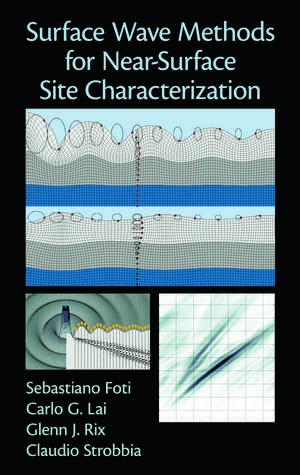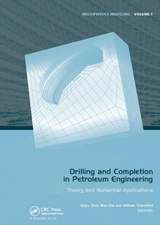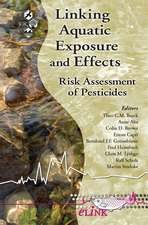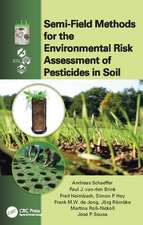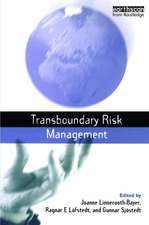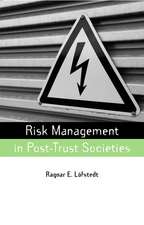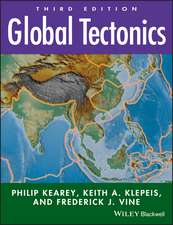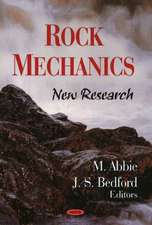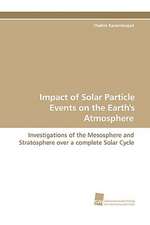Surface Wave Methods for Near-Surface Site Characterization
Autor Sebastiano Foti, Carlo Lai, Glenn J. Rix, Claudio Strobbiaen Limba Engleză Hardback – 21 aug 2014
Using examples and case studies directly drawn from the authors’ experience, Surface Wave Methods for Near-Surface Site Characterization addresses both the experimental and theoretical aspects of surface wave propagation in both forward and inverse modeling. This book accents the key facets associated with surface wave testing for near-surface site characterization. It clearly outlines the basic principles, the theoretical framework and the practical implementation of surface wave analysis. In addition, it also describes in detail the equipment and measuring devices, acquisition techniques, signal processing, forward and inverse modeling theories, and testing protocols that form the basis of modern surface wave techniques.
Review Examples of Typical Applications for This Geophysical Technique
Divided into eight chapters, the book explains surface wave testing principles from data measurement to interpretation. It effectively integrates several examples and case studies illustrating how different ground conditions and geological settings may influence the interpretation of data measurements. The authors accurately describe each phase of testing in addition to the guidelines for correctly performing and interpreting results. They present variants of the test within a consistent framework to facilitate comparisons, and include an in-depth discussion of the uncertainties arising at each stage of surface wave testing.
- Provides a comprehensive and in-depth treatment of all the steps involved in surface wave testing
- Discusses surface wave methods and their applications in various geotechnical conditions and geological settings
- Explains how surface wave measurements can be used to estimate both stiffness and dissipative properties of the ground
- Addresses the issue of uncertainty, which is often an overlooked problem in surface wave testing
- Includes examples with comparative analysis using different processing techniques and inversion algorithms
- Outlines advanced applications of surface wave testing such as joint inversion, underwater investigation, and Love wave analysis
| Toate formatele și edițiile | Preț | Express |
|---|---|---|
| Paperback (1) | 435.17 lei 43-57 zile | |
| CRC Press – 31 mar 2017 | 435.17 lei 43-57 zile | |
| Hardback (1) | 1121.81 lei 43-57 zile | |
| CRC Press – 21 aug 2014 | 1121.81 lei 43-57 zile |
Preț: 1121.81 lei
Preț vechi: 1368.06 lei
-18% Nou
Puncte Express: 1683
Preț estimativ în valută:
214.73€ • 233.32$ • 180.49£
214.73€ • 233.32$ • 180.49£
Carte tipărită la comandă
Livrare economică 21 aprilie-05 mai
Preluare comenzi: 021 569.72.76
Specificații
ISBN-13: 9780415678766
ISBN-10: 0415678765
Pagini: 488
Ilustrații: 265 black & white illustrations, 11 black & white tables
Dimensiuni: 156 x 234 x 30 mm
Greutate: 0.82 kg
Ediția:New.
Editura: CRC Press
Colecția CRC Press
Locul publicării:Boca Raton, United States
ISBN-10: 0415678765
Pagini: 488
Ilustrații: 265 black & white illustrations, 11 black & white tables
Dimensiuni: 156 x 234 x 30 mm
Greutate: 0.82 kg
Ediția:New.
Editura: CRC Press
Colecția CRC Press
Locul publicării:Boca Raton, United States
Public țintă
Postgraduate, Professional, and Professional Practice & DevelopmentCuprins
Overview of surface wave methods. Linear wave propagation in vertically inhomogeneous continua. Measurement of surface waves. Dispersion analysis. Attenuation analysis. Inversion. Case histories. Advanced surface wave methods. References. Index.
Recenzii
"… understanding the philosophy behind near surface site characterization surveys using surface waves, associated error analysis, and limitations in data interpretation may appear excessively complicated for students, or for researchers from different fields. The authors aim to fix this problem by providing a complete overview of surface wave methods and by describing every single step of data analysis including the field equipment and data acquisition in detail. … this book will be a very good source of knowledge for graduate students and engineers, but also for researchers from different fields who want to study site characterization using surface waves."
—Pure and Applied Geophysics, 2015
"Overall, the book reads as a single unified treatment of the subject area and avoids the common pitfall of appearing to be a collection of separate but related topic areas written by different authors. … for both those researchers interested in the detailed physics and mathematics underlying the method as well as for practitioners interested in proper application of the SWMs to real-world site characterization, this book is highly recommended."
—Noise Control Engineering. Journal, March-April 2015
"At last a definitive book on the acquisition of ground properties by surface waves! In the past, geotechnical engineers have lacked a readily accessible guide and body of knowledge in one state-of-the-art volume to give them the confidence to use this hugely important method of site characterization. Now engineers can have this guide on how to quickly and non-invasively test large volumes of soil to give overall dynamic (small strain) soil properties used in the prediction of static surface settlements and lateral ground movements. The increasingly wide-spread use of the method must surely follow the publication of this book that will become a standard on the bookshelves of academics and practitioners alike."
—Bruce Menzies, founder, Global Digital Systems Ltd (GDS)
"This book gives an excellent overview of surface wave methods as well as detailed and rigorous insights on various aspects of such methods. It is thus an invaluable source of information for practitioners, students and researchers."
—Jean-Francois SEMBLAT, IFSTTAR, Dept GERS, Earthquakes & Vibrations Lab
"Simple, clear and objective… In this book the techniques for useful geotechnical engineering applications are explained with rigor and detail, namely for ground profiling and characterization, soil improvement, characterization of pavements and detection of anomalies. In addition to outlining these problems, a chapter with case histories allows the reader to understand how the topics covered in the book can be applied to practical design. This book will be an excellent base for teaching in undergraduate and post-graduate level, and will be very useful for geophysical and geotechnical engineering practitioners."
—António Viana da Fonseca, University of Porto , Praça de Gomes Teixeira, Portugal
—Pure and Applied Geophysics, 2015
"Overall, the book reads as a single unified treatment of the subject area and avoids the common pitfall of appearing to be a collection of separate but related topic areas written by different authors. … for both those researchers interested in the detailed physics and mathematics underlying the method as well as for practitioners interested in proper application of the SWMs to real-world site characterization, this book is highly recommended."
—Noise Control Engineering. Journal, March-April 2015
"At last a definitive book on the acquisition of ground properties by surface waves! In the past, geotechnical engineers have lacked a readily accessible guide and body of knowledge in one state-of-the-art volume to give them the confidence to use this hugely important method of site characterization. Now engineers can have this guide on how to quickly and non-invasively test large volumes of soil to give overall dynamic (small strain) soil properties used in the prediction of static surface settlements and lateral ground movements. The increasingly wide-spread use of the method must surely follow the publication of this book that will become a standard on the bookshelves of academics and practitioners alike."
—Bruce Menzies, founder, Global Digital Systems Ltd (GDS)
"This book gives an excellent overview of surface wave methods as well as detailed and rigorous insights on various aspects of such methods. It is thus an invaluable source of information for practitioners, students and researchers."
—Jean-Francois SEMBLAT, IFSTTAR, Dept GERS, Earthquakes & Vibrations Lab
"Simple, clear and objective… In this book the techniques for useful geotechnical engineering applications are explained with rigor and detail, namely for ground profiling and characterization, soil improvement, characterization of pavements and detection of anomalies. In addition to outlining these problems, a chapter with case histories allows the reader to understand how the topics covered in the book can be applied to practical design. This book will be an excellent base for teaching in undergraduate and post-graduate level, and will be very useful for geophysical and geotechnical engineering practitioners."
—António Viana da Fonseca, University of Porto , Praça de Gomes Teixeira, Portugal
Descriere
This book provides a unified treatment of surface wave propagation, signal processing, inverse theory, and the testing protocols that form the basis of modern surface wave methods. The use of these tests has increased dramatically since the 1980s, but they are too often performed and interpreted in a variety of ways that are confusing. This book answers the pressing need for a guide to the basic principles as well as outlining a set of reliable, dependable, and accepted practices.
